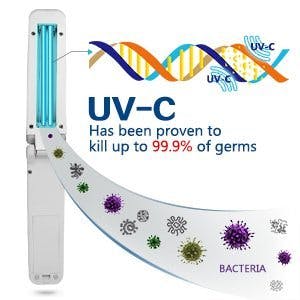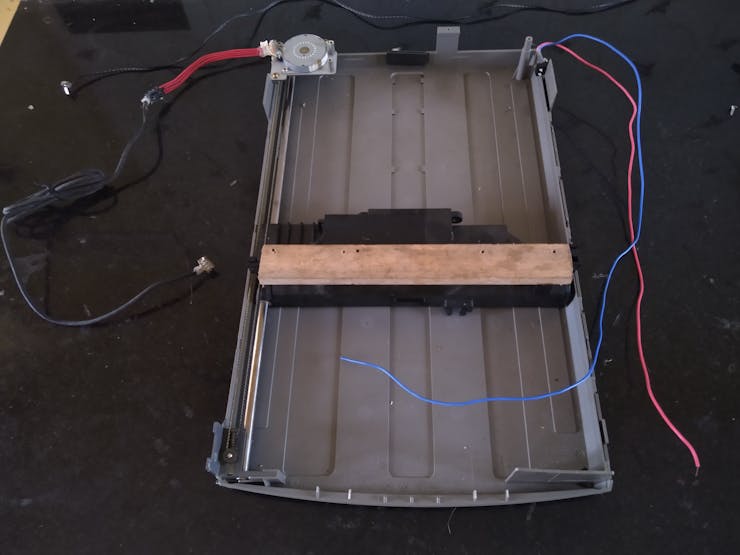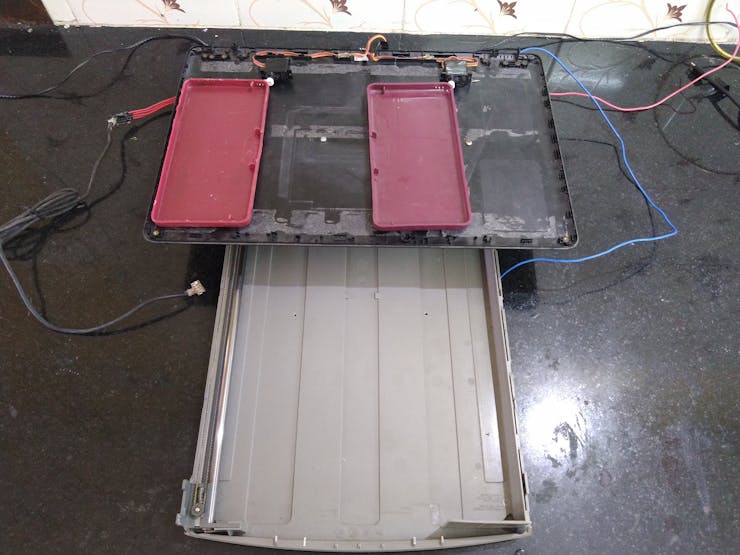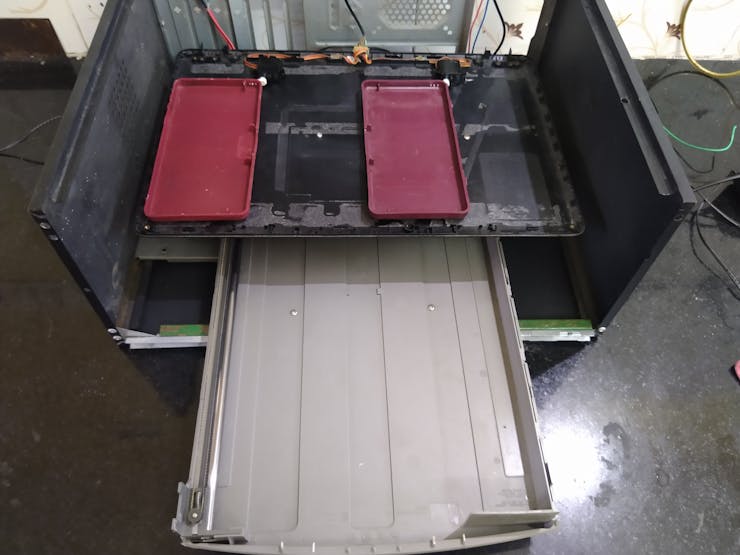 | Enter Your Electronics & Design Project for a chance to win a $200 shopping cart! Back to homepage | Project14 Home |
| Monthly Themes | ||
| Monthly Theme Poll |
UV-C Based Germs Disinfecting Machine using vintage flatbed Scanner (Acer) and an old CPU
A touch-free germs disinfecting device that can disinfect anything from masks, wallets to mobile phones, killing maximum germs using UV-C.
Things used in this project:
Hardware:
| S.No | Components | Quantity |
|---|---|---|
| 1 | Arduino MKR WiFi 1010 | 1 |
| 2 | Arduino UNO | 1 |
| 3 | MG90S Micro Servo | 1 |
| 4 | PHPoC Bread Board | 1 |
| 5 | Jumper wires (generic) | 1 |
| 6 | UVC Lamp | 1 |
| 7 | Adafruit RGB Backlight LCD - 16x2 | 1 |
| 8 | Digilent IR Proximity Sensor | 2 |
| 9 | Ultrasonic Sensor - HC-SR04 (Generic) | 1 |
| 10 | SparkFun Stepper motor driver board A4988 | 1 |
| 11 | ControlEverything.com 1-Channel Signal Relay 1A SPDT I²C Mini Module | 1 |
Software:
Arduino IDE
Tools and consumables used:
| Sno | Tools |
|---|---|
| 1 | Soldering iron (generic) |
| 2 | Solder Wire, Lead-Free |
| 3 | Solder Flux, Soldering |
| 4 | Drill / Driver, Cordless |
| 5 | Multitool, Screwdriver |
| 6 | Hammer |
| 7 | Poker |
| 8 | Hacksaw with Blade |
Story:
Motivation:
I always wanted to build something useful to society and the world. Having been experienced in doing several science projects in electronics and IoT, I wanted to utilize my skills in such a way that most of the front-line workers are benefited from that. Due to the ongoing pandemic, things have changed a lot. We need to wear masks everywhere, sanitize our hands from time to time, etc. One such issue that I found was, after using our mobile phones or other things outside, we often forget to sanitize them or we do it with liquid disinfectant. Thus, I wanted to build something that could help people stay away from germs by disinfecting their essentials without touching the disinfecting machine itself.
In the current era, e-Waste has been a major threat to the environment. Therefore, this project mainly relies on using e-Waste effectively as much as possible.
Theory:
UV-C kills the germs by rupturing their cell membrane and altering their DNA/RNA
So this was the main idea in doing this project. UV disinfecting chambers have already hit the market, but one of the main features that they all lacked was, the 360-degree all-surface disinfection. This project overcomes those limitations and disinfects all the surfaces by flipping the items automatically after disinfecting one surface.
Key Features:
- Completely Touch-Free
- 360-degree disinfection
- Kills coronaviruses also
- UV-C based
- Interactive display
- Adjustable Timer up to 12 Hrs.
- Emergency stop
Working:
- The micro-controller continuously monitors for any obstacles in the proximity of the IR sensors. Once there is an obstacle in the close proximity, for required amount of time (1.5 seconds in this case) an event is triggered, based on what's displayed in the LCD.
- When the open tray event is triggered, the stepper motor is driven the required number of steps to open the tray.
- The same way when the close tray event is triggered, the stepper is driven until the limit switch shows a red-flag (the switch changes it's state) so that the tray is closed.
- The timer is set either to default or by measuring the distance between the ultrasonic sensor and the hand.
- After choosing the disinfect option, the relay is turned ON, thus turning on the UV-C lamp. After disinfecting one surface, the items are automatically flipped with the help of servo motors while the UV is still ON.
- Lastly, after disinfection, the tray is again opened by the stepper motor.
Procedure:
Step 1: Gathering Things
Since this project is made from e-Waste, you need to first gather the parts. Things you would need:- An old flatbed scanner / embedded scanner (from the printer)
- An old CPU Case
- Geometry box
Step 2: Building the Case and Tray
- Dismantle the scanner and take out the lower part of the scanner that would have the scan head and the stepper motor attached with it. This would be used to take the items inside and outside the disinfecting machine.
- Solder wires to the stepper motor, so that they're lengthy enough to connect to the breadboard.
- Fix a limit switch at the end of the base, so that we can determine the position of the scan head while starting the MCU.
- Remove the lamp that's there inside the scan head, you can re-use it later. Fix a firm base (tray) to the scan head. The things to be disinfected will be placed on the tray.
- Now take the geometry box and separate the lid and the base. Attach these two to the servo motors, the servo motors will be used to flip these items.
- Now fix the servo motor set up with the tray such that they can lift items and flip them. Make sure you use a powerful enough servo like a metal geared one, ex. MG90S servo.
- Now mount the tray to the scan head. You should end up something like this:
- Remove the front part of the CPU case such that it's completely open in one side.
- Now attach the lower part of the scanner with CPU case using screws. Drill holes if necessary.
Step 3: The circuitry and sensors
Schematic:
- The primary Micro-controller board will be the Arduino MKR WiFi 1010, and the secondary Micro-controller board will be the Arduino Uno. Give the connections as per the circuit given in the Schematics section below.
- Fix the IR sensor in front of the top panel and the ultrasonic sensor in the middle, the display should be in the corner and clearly visible to the user.
- The UV-C light should be placed beneath the top panel, in a reasonable position such that max. amount of light falls on the items placed on the tray.
- Test each and every part including the motor and sensor as you connect them to the MCU.
- Make the wires connecting the servo lengthy enough such that it doesn't stop the tray from coming out completely.
- The completed circuitry looked like this for me, but make the connections as neat as possible.
Step 4: Uploading the code
- The code that is provided is completely modular, call the functions that you need to execute while checking the circuitry.
Code:
You can find the full code here: https://github.com/yeshvanth-m/uvc
The final model:
Full Video:
Thank you for reading! 










Top Comments